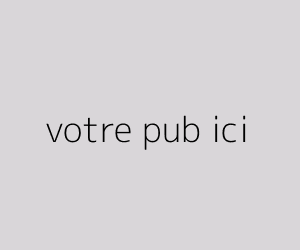- 13:25UN Chief Highlights Morocco's Sahara Initiative for Sahel Economic Integration
- 13:15Kamala Harris Targets Disenchanted Republicans in Key Battleground States Ahead of Election
- 13:00Morocco Bolsters Maritime Influence with IMO Council Vice-Presidency
- 12:45King Charles III's Australian Visit: A Royal Encounter Amidst Growing Republican Sentiments
- 12:25Moroccan Buyers Surge to Second Place in Spanish Property Market
- 12:05Kamala Harris Highlights Trump's Campaign Fatigue in New Attack Ad
- 11:40Stellantis Shifts Gears: Morocco's Automotive Boom Raises Questions for European Manufacturing
- 11:25Elon Musk Increases Financial Incentive for Petition Supporting Constitutional Rights
- 11:15Morocco's Human Rights Council Pushes for Enhanced Protections in Strike Legislation
Follow us on Facebook
Unraveling Gender Disparities: Morocco's Uphill Battle in the Global Gender Gap
In a stark reality unveiled by the World Economic Forum's Global Gender Gap Report, Morocco finds itself entrenched among the bottom echelons, occupying the 137th position out of 146 nations evaluated. This disheartening ranking places the North African nation in the company of countries grappling with profound gender inequalities, such as Bangladesh, Sudan, Iran, Pakistan, and India.
The report, a comprehensive assessment of gender disparities across economic, political, educational, and health-related domains, casts a harsh light on Morocco's ongoing struggle with economic inequality between men and women. With a mere 40% gender parity in estimated earned income, the nation's journey toward bridging the divide remains arduous.
Delving deeper into the report's findings, one of the most glaring indicators of this disparity manifests in labor force participation. Morocco, along with its counterparts at the bottom of the rankings, registers a concerning statistic: less than 50% parity in this crucial metric. Iran, the nation with the lowest rate, stands at a mere 20%, underscoring the severity of the challenges faced.
Despite the sobering realities, glimmers of progress emerge within the Middle East and North Africa (MENA) region, to which Morocco belongs. The region has witnessed a slight improvement in economic participation and opportunity, with a regional score of 43%, marking a 1.8 percentage point increase from the previous year and a 3 percentage point improvement since 2006. Notably, Morocco stands among seven economies in the region where gender parity in technical and professional roles exceeds the 70% threshold.
In the political sphere, the MENA region ranks eighth globally in Political Empowerment, achieving a modest 11% gender parity. However, Morocco has made notable strides, with women holding 26% of ministerial positions and constituting 24% of parliamentary roles—one of the higher percentages in the region, though still far from achieving full parity.
Across the broader region, nations like Tunisia, Jordan, and Egypt exhibit varying degrees of progress in political empowerment, with Tunisia leading in ministerial representation at 36%. The United Arab Emirates remains the sole country in the region to achieve full gender parity in its parliament.
Shifting the focus to health and educational attainment, Egypt emerges as a regional leader, achieving an impressive 96% parity in health and survival. While Egypt ranks 110th globally in educational attainment, it has closed 96.6% of its educational gender gap, showcasing particular strength in primary and tertiary education enrollment. However, the country lags in literacy rates and secondary education parity.
The report underscores the persistent underrepresentation of women in senior and managerial roles globally, with only 40% parity in these positions. This trend resonates within the MENA region, although some countries, such as Oman and Jordan, exceed the global average in gender parity for legislative, senior officer, and managerial roles.
As Morocco grapples with the sobering realities unveiled by the Global Gender Gap Report, the nation's journey toward achieving true gender equality remains an uphill battle. However, the glimmers of progress within the region and the unwavering commitment to addressing these disparities offer a glimmer of hope for a future where gender-based barriers are dismantled and equal opportunities prevail across all spheres of society.



